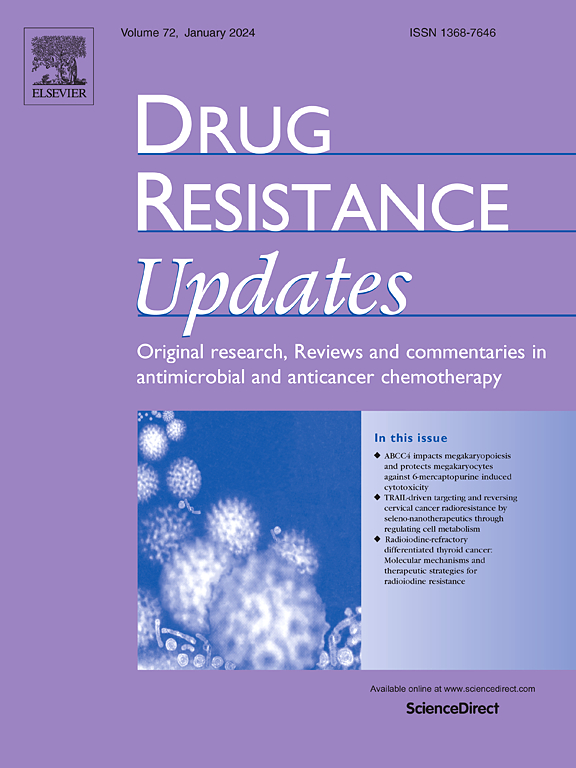A quiescence-like/TGF-β1-specific CRISPRi screen reveals drug uptake transporters as secondary targets of kinase inhibitors in AML
IF 15.8
1区 医学
Q1 PHARMACOLOGY & PHARMACY
引用次数: 0
Abstract
Relapse in acute myeloid leukemia (AML) is driven by resistant subclones that survive chemotherapy. It is assumed that these resilient leukemic cells can modify their proliferative behavior by entering a quiescent-like state, similar to healthy hematopoietic stem cells (HSCs). These dormant cells can evade the effects of cytostatic drugs that primarily target actively dividing cells. Although quiescence has been extensively studied in healthy hematopoiesis and various solid cancers, its role in AML has remained unexplored.
In this study, we applied an HSC-derived quiescence-associated gene signature to an AML patient cohort and found it to be strongly correlated with poor prognosis and active TGF-β signaling. In vitro treatment with TGF-β1 induces a quiescence-like phenotype, resulting in a G0 shift and reduced sensitivity to cytarabine. To find potential therapeutic targets that prevent AML-associated quiescence and improve response to cytarabine, we conducted a comprehensive CRISPR interference (CRISPRi) screen combined with TGF-β1 stimulation. This approach identified TGFBR1 inhibitors, like vactosertib, as effective agents for preventing the G0 shift in AML cell models. However, pretreatment with vactosertib unexpectedly induced complete resistance to cytarabine. To elucidate the underlying mechanism, we performed a multi-faceted approach combining a second CRISPRi screen, liquid chromatography-tandem mass spectrometry (LC-MS/MS), and in silico analysis. Our findings revealed that TGFBR1 inhibitors unintentionally target the nucleoside transporter SLC29A1 (ENT1), leading to reduced intracellular cytarabine levels. Importantly, we found that this drug interaction is not unique to TGFBR1 inhibitors, but extends to other clinically significant kinase inhibitors, such as the FLT3 inhibitor midostaurin. These findings may have important implications for optimizing combination therapies in AML treatment.
求助全文
约1分钟内获得全文
求助全文
来源期刊

Drug Resistance Updates
医学-药学
CiteScore
26.20
自引率
11.90%
发文量
32
审稿时长
29 days
期刊介绍:
Drug Resistance Updates serves as a platform for publishing original research, commentary, and expert reviews on significant advancements in drug resistance related to infectious diseases and cancer. It encompasses diverse disciplines such as molecular biology, biochemistry, cell biology, pharmacology, microbiology, preclinical therapeutics, oncology, and clinical medicine. The journal addresses both basic research and clinical aspects of drug resistance, providing insights into novel drugs and strategies to overcome resistance. Original research articles are welcomed, and review articles are authored by leaders in the field by invitation.
Articles are written by leaders in the field, in response to an invitation from the Editors, and are peer-reviewed prior to publication. Articles are clear, readable, and up-to-date, suitable for a multidisciplinary readership and include schematic diagrams and other illustrations conveying the major points of the article. The goal is to highlight recent areas of growth and put them in perspective.
*Expert reviews in clinical and basic drug resistance research in oncology and infectious disease
*Describes emerging technologies and therapies, particularly those that overcome drug resistance
*Emphasises common themes in microbial and cancer research
 求助内容:
求助内容: 应助结果提醒方式:
应助结果提醒方式:


